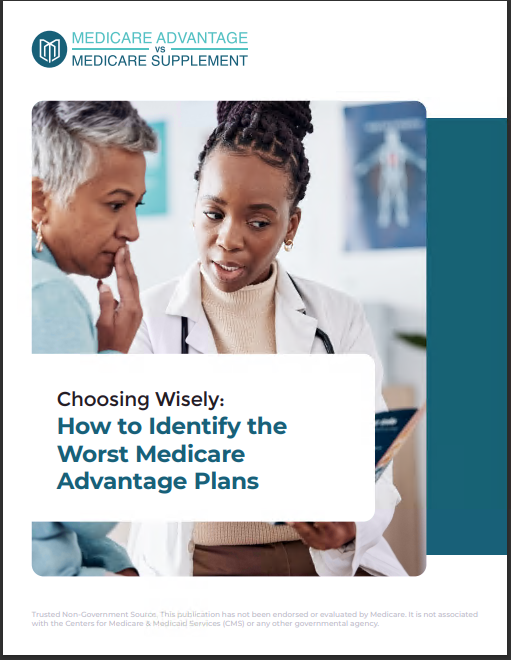Key Takeaways
-
Medigap plans continue to offer valuable coverage that helps fill the gaps in Original Medicare, providing peace of mind and financial protection.
-
2025 brings important changes in Medicare costs, making Medigap policies an even more critical choice for many seniors.
What Are Medigap Plans?
If you’re enrolled in Original Medicare, you’ve likely noticed it doesn’t cover everything. Medigap plans, also known as Medicare Supplement Insurance, are designed to bridge the coverage gaps left by Original Medicare (Parts A and B). These plans help cover out-of-pocket costs such as deductibles, copayments, and coinsurance, ensuring that unexpected medical expenses don’t derail your financial stability.
A Partnership With Original Medicare
Medigap works alongside Original Medicare. When Medicare pays its share of approved healthcare costs, your Medigap policy steps in to cover the remaining amount, depending on the plan you choose. This additional layer of coverage offers peace of mind and simplifies managing healthcare expenses.
Standardized Plans Across the Nation
In most states, Medigap plans are standardized into ten different options, labeled A through N. Each plan offers a unique mix of benefits, but the coverage within each plan type is consistent regardless of the insurance company providing it. This makes it easier for you to compare options and select the right one for your needs.
Why Medigap Is a Popular Choice in 2025
Medigap plans continue to be a reliable choice for seniors looking for enhanced coverage. Here’s why they remain an excellent option in 2025:
Rising Medicare Costs
The costs associated with Medicare are increasing in 2025. For instance:
-
Part A Deductible: Increasing to $1,676 per benefit period.
-
Part B Premium: Rising to $185 monthly.
-
Part B Deductible: Set at $257 annually.
Medigap plans can absorb these rising costs, providing financial relief and predictable expenses.
No Networks to Worry About
Unlike Medicare Advantage plans, which may restrict you to a network of doctors and hospitals, Medigap plans offer nationwide coverage. This flexibility is ideal if you’re a frequent traveler or if you live in different states throughout the year.
Guaranteed Renewability
As long as you pay your premiums, your Medigap plan can’t be canceled. This guaranteed renewability ensures you won’t lose coverage when you need it most.
Consistent Benefits
Medigap policies provide consistent benefits year after year, unlike some Medicare Advantage plans that may change coverage or cost annually. This stability makes budgeting for healthcare much easier.
What Medigap Doesn’t Cover
While Medigap plans offer robust coverage, they aren’t a catch-all solution. Here are some key areas they don’t cover:
-
Prescription Drugs: Most Medigap plans do not include prescription drug coverage. You’ll need to enroll in a standalone Part D plan for this.
-
Long-Term Care: Medigap doesn’t cover services like nursing homes or assisted living facilities.
-
Vision and Dental: Routine eye exams, glasses, and dental work are not included.
Understanding these limitations will help you plan for any additional coverage you might need.
Choosing the Right Medigap Plan
Selecting the right Medigap plan requires careful consideration of your healthcare needs and budget. Here are some steps to guide your decision:
Assess Your Healthcare Needs
Think about the services you use most often. If you visit the doctor frequently or require specialized care, a plan with more comprehensive coverage might be the best fit.
Compare Standardized Plans
Each Medigap plan offers a different set of benefits. For example:
-
Plan G: Covers almost all out-of-pocket costs except the Part B deductible.
-
Plan N: Offers lower premiums but requires you to pay some copayments and doesn’t cover excess charges.
Consider Timing
The best time to buy a Medigap policy is during your six-month Medigap Open Enrollment Period. This period starts the month you turn 65 and are enrolled in Part B. During this window, you can buy any policy available in your area without worrying about medical underwriting.
Understand Pricing
Medigap premiums are influenced by factors such as your age, location, and the plan’s pricing structure. While it’s important to find a plan that fits your budget, be cautious of plans with premiums that may increase significantly over time.
How Medigap Compares to Other Options
It’s essential to understand how Medigap stacks up against other Medicare options, like Medicare Advantage, to determine what’s right for you.
Medigap vs. Medicare Advantage
| Feature | Medigap | Medicare Advantage |
|---|---|---|
| Network Restrictions | None | Limited to a network |
| Out-of-Pocket Costs | Predictable | Varies by plan |
| Flexibility | Nationwide coverage | Coverage limited to plan area |
| Stability | Consistent benefits | Benefits may change yearly |
For those who value flexibility and predictable costs, Medigap often emerges as the superior choice.
Medigap Plan Changes in 2025
While Medigap plans themselves are standardized and don’t change their benefits yearly, the costs associated with Medicare make these policies more valuable in 2025. With higher deductibles and premiums for Parts A and B, having a Medigap plan can significantly offset these increases.
Additionally, as the new $2,000 out-of-pocket cap for Part D takes effect in 2025, you may want to pair your Medigap plan with a robust Part D policy to fully protect yourself from unexpected expenses.
Why Timing Matters
When it comes to Medigap, timing is everything. Missing your Medigap Open Enrollment Period could mean:
-
Higher Costs: Insurance companies can charge you more based on your health.
-
Limited Availability: Some plans may not be available to you.
-
Medical Underwriting: You could be denied coverage altogether.
Acting during your open enrollment window ensures you have access to the most options at the best rates.
Making the Most of Your Medigap Plan
Once you have your Medigap policy, there are steps you can take to maximize its benefits:
Know What’s Covered
Familiarize yourself with your plan’s benefits so you’re not caught off guard by unexpected costs.
Pair It With Part D
Ensure you have a comprehensive prescription drug plan to cover medication costs not included in Medigap.
Stay Informed
Keep an eye on changes to Medicare that may affect your coverage or costs, and adjust your plans accordingly.
Plan for the Future
Consider how your healthcare needs might evolve over time. Medigap offers the stability and flexibility to adapt as you age.
Is Medigap Right for You?
Medigap isn’t the best fit for everyone, but it’s worth considering if:
-
You value nationwide coverage without network restrictions.
-
You want predictable healthcare costs.
-
You travel frequently or live in multiple states.
-
You’re looking for a plan that provides consistent benefits year after year.
By weighing your needs against the advantages of Medigap, you can decide if it’s the right solution for your healthcare coverage.
Medigap Plans: A Reliable Choice for 2025 and Beyond
Medigap plans continue to stand out as a dependable option for seniors navigating the complexities of Medicare. With rising costs in 2025 and the enduring benefits of Medigap, this type of insurance is worth exploring to ensure you’re fully covered. Taking the time to understand your options and act during the optimal enrollment periods can set you up for years of peace of mind.









